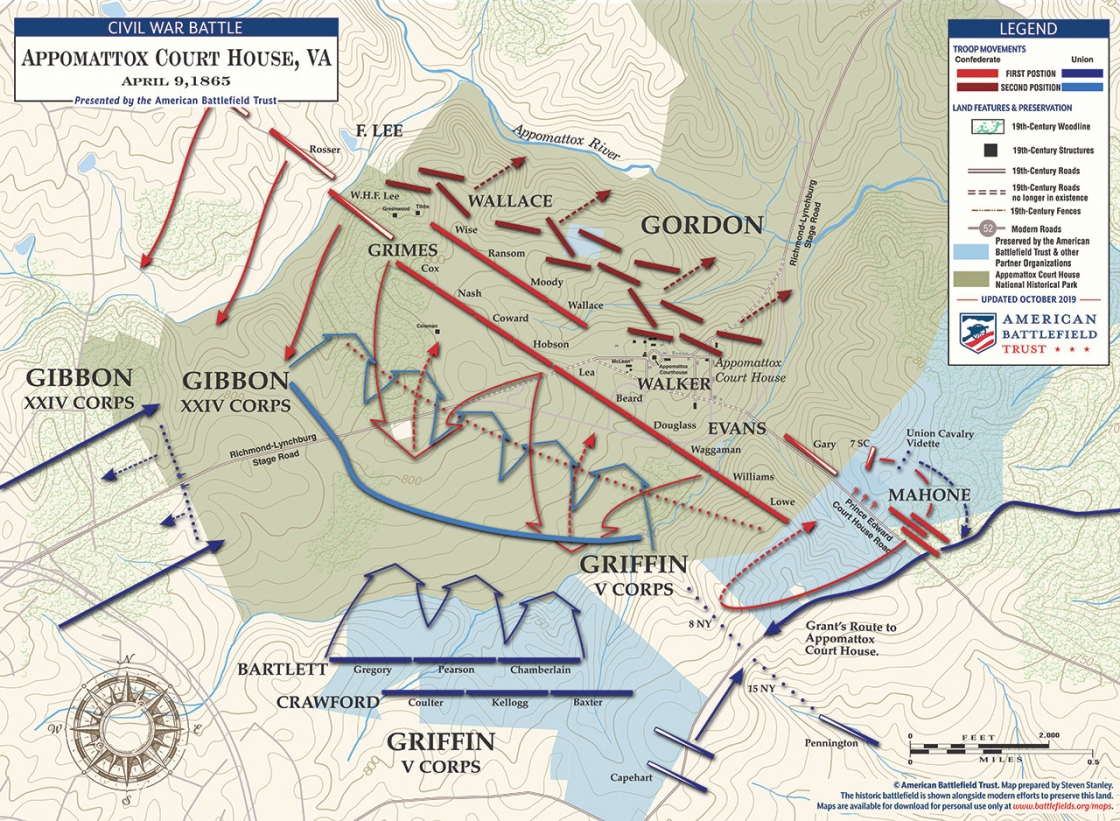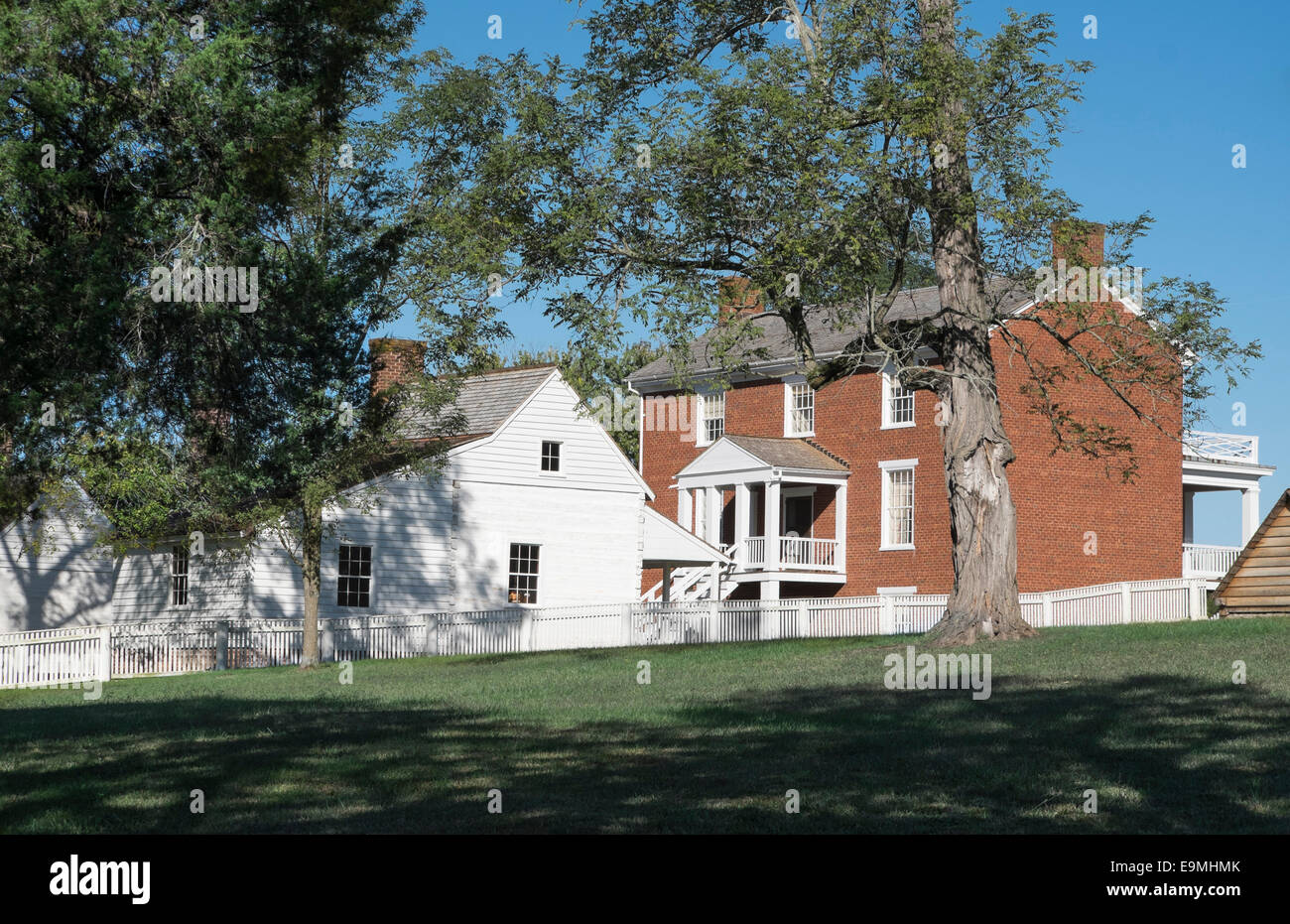Appomattox Court House Map, Location, History, & Civil War
Table Of Content

The official language used for the content of the Los Angeles Superior Court public website is English. Google™ Translate is a free online language translation service that can translate text and web pages into different languages. Computerized translations are only an approximation of the website's original content.

Appomattox Court House National Historical Park
Here are some facts about the battle and the surrender to help shed a little light for newcomers and test the knowledge of veterans. On April 8, the Confederates discovered that their army was blocked by Federal cavalry. Confederate commanders tried to break through the cavalry screen, hoping that the horsemen were unsupported by other troops. But Grant had anticipated Lee’s attempt to escape and ordered two corps (Twenty-fourth and Fifth), under the commands of Maj. Gen. John Gibbon and Bvt. Maj. Gen. Charles Griffin, to march all night to reinforce the Union cavalry and trap Lee. Lee’s formal surrender to Grant at Appomattox Court House on April 9, 1865, brought the war in Virginia to an end.
Surrender
The surrender at Appomattox Court House occurred in April 1865 when Confederate general Robert E. Lee submitted to Union general-in-chief Ulysses S. Grant, all but ending the American Civil War (1861–1865). After the fall of Richmond on April 2–3, Lee and his Army of Northern Virginia had retreated west to the village of Appomattox Court House when, on April 9, the well-positioned Army of the James forced them to raise a white flag. Within hours an elated Grant hosted his adversary in the drawing room of a house owned by Wilmer McLean, who four years earlier had fled his home near the fighting at the First Battle of Manassas for the comparative quiet of the Appomattox countryside. Now Lee, in a spotless dress uniform, accepted generous terms from the more informally dressed Grant, who paroled the Confederate soldiers and allowed the officers to keep their sidearms and horses. Lee subsequently issued his famous farewell orders, praising his men’s courage and blaming their defeat on superior Union resources.
Lee's Surrender
Surrender ceremony events took place over the next three days, ending with the Confederate infantry stacking their arms on April 12. Even in this relatively modest and reasonable form, Lee’s claim in the first sentence of General Orders No. 9 discounts the quality of Union generalship in the Eastern Theater from May 1864 to April 1865, as well as the efficacy of Union grand strategy during that period. It also passes over his increasing private doubts about the “unsurpassed courage and fortitude” of Confederate soldiers, thousands of whom deserted during the Appomattox Campaign. In his Personal Memoirs (Chapter 68) Grant sharply challenged this view, and many subsequent historians have done likewise. On April 8 Lee’s Army of Northern Virginia paused its march a mile from the small village of Appomattox Court House.
2022 Weather in Review: Appomattox Court House National Historical Park (U.S - National Park Service
2022 Weather in Review: Appomattox Court House National Historical Park (U.S.
Posted: Thu, 26 Jan 2023 08:00:00 GMT [source]
The translation should not be considered exact and in some cases may include incorrect or offensive language. The formal ceremony and collection of weapons took place on April 12 under the supervision of Brig. Gen. Joshua Lawrence Chamberlain. As ranks of Confederate soldiers came forward to hand over their weapons and flags, Chamberlain ordered his men to salute their defeated adversaries as a gesture of respect. Other witnesses also reported that interactions between Yankees and Rebels were almost entirely kind and friendly.
Surrender and aftermath
General Edmund Kirby Smith surrendered the Confederate Trans-Mississippi Department on June 2, 1865, in Galveston, Texas. Also on May 26, 1865, the Camp Napoleon Council of Native American tribes, including a number that had sided with the Confederacy, met in Oklahoma and decided to have commissioners offer peace with the United States. Cherokee Chief and General Stand Watie, in command of 1st Cherokee Mounted Rifles, surrendered the last sizeable organized Confederate force on June 23, 1865,[35] in Choctaw County, Oklahoma. The Los Angeles Superior Court does not warrant the accuracy, reliability or timeliness of any information translated by Google™ Translate or any other translation system.
The Gentleman’s Agreement That Ended the Civil War
Three miles to the northeast, at the former county seat, known as Appomattox Court House, Gen. Robert E. Lee surrendered to Gen. Ulysses S. Grant, thus effectively ending the Civil War. This location was virtually deserted after removal of the county seat to the new town of Appomattox in 1892 but was made a national historical monument in 1940; its buildings, including the McLean House, in which the formal surrender took place, were restored to their 1865 condition. When Lee departed from Amelia Court House, he saw that Grant’s army was marching parallel to his movements west along the Appomattox River. Lee determined that he would be unable to proceed southwest and into North Carolina as planned.
Branches / Partner Locations

In the ensuing years, the house had a series of owners before it was reconstructed and opened to the public by the National Park Service in 1949. The Battle of Appomattox Court House was fought on April 9, 1865, near the town of Appomattox Court House, Virginia, and led to Confederate General Robert E. Lee’s surrender of his Army of Northern Virginia to Union General Ulysses S. Grant. Days earlier, Lee had abandoned the Confederate capital of Richmond and the city of Petersburg; his goal was to rally the remnants of his beleaguered troops, meet Confederate reinforcements in North Carolina and resume fighting. But the resulting Battle of Appomattox Court House, which lasted only a few hours, effectively brought the four-year Civil War to an end. While General George Meade (who was not present at the meeting) reportedly shouted that "it's all over" upon hearing the surrender was signed, roughly 175,000 Confederates remained in the field, but were mostly starving and disillusioned. The term jurisdiction refers to the authority a court has to decide a case.
Sign up for Inside History
Lee’s own army had threatened the nation’s capital and had to be driven back in some of the bloodiest battles of the war. Healing the country, rather than vengeance, directed Grant’s and the Lincoln administration’s actions. There would be no mass imprisonments or executions, no parading of defeated enemies through Northern streets. Lincoln’s priority—shared by Grant—was “to bind up the nation’s wounds” and unite the country together again as a functioning democracy under the Constitution; extended retribution against the former Confederates would only slow down the process. After the battles of Appomattox Station on April 8, 1865, and Appomattox Court House on April 9, 1865, General Lee met General Grant at the home of Wilmer McLean and surrendered the Army of Northern Virginia--signaling the beginning of the end of the Civil War.
The surrender was a highly emotional affair for the participants, many of whom had been fighting for four years. Soldiers on both sides cheered and cried – often at the same time – upon hearing the news. It took several months after Appomattox for all the Confederate armies to capitulate, and still the war was not declared at an end until Texas formed a new state government that accepted the abolition of slavery in August 1866. Lee and Grant, both of whom held the highest rank in their respective armies, had known each other slightly during the Mexican-American War ( ) and began their dialogue by exchanging awkward personal inquiries. Characteristically, Grant had arrived in his mud-splattered field uniform while Lee had turned out in full dress attire, complete with sash and sword.
The phenomenon was not limited to the upper echelons – soldiers of all ranks from both armies tried to take a piece of their experience home with them. Northerners bought Confederate dollars from the Rebels, and soldiers tore up their own regimental flags as souvenirs. After Lee's surrender, the Army of Tennessee remained in the field for over two weeks, until Johnston finally surrendered the army and numerous smaller garrisons to Maj. Gen. William T. Sherman on April 26. Johnston's surrender was the largest of the war, totaling almost 90,000 men. On April 8, the Confederates discovered that the army’s escape was blocked by Federal cavalry. The Confederate commanders decided to try to break through the cavalry screen, in the hope that the horsemen were unsupported by other troops.
Reconstruction was a slow and at times violent undertaking, and Lincoln’s wish that the nation shall have a new birth of freedom would largely be deferred. The Union was saved, but the intersections of race and legacy of slavery, which was at the core of the Civil War, continues to confront Americans today. Since the nineteenth century, a more concerted effort has been made to preserve the history of Appomattox Court House for everyone to experience.
After the war, McLean would famously observe that "The war began in my front yard and ended in my front parlor." The official copies of the surrender terms signed by Lee and Grant were drafted by Grant’s personal military secretary, Lt. Col. Ely S. Parker. He became friends with Grant after the Mexican-American War, and Grant secured an officer’s commission for him.
Comments
Post a Comment